Rome: Places and Monuments
Go to : ANCIENT ROME | MEDIEVAL ROME | RENAISSANCE ROME | BAROQUE ROME | ROMANTIC ROME | MODERN ROMEANCIENT ROME
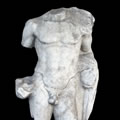
Grave of the Gladiator
His name was Marcus Nonius Macrinus, he was general of the Emperor Marcus Aurelius and was present on the battlefield in 169 AD. as legatus et comes in first German campaign against Quadi and Marcomanni; in his cursus honorum there are important both political and religious assignments from pro consulate in Asia and Africa to participation in the collegium XVviri sacris faciundis in charge of consulting the Sibillini books ...
Continue »
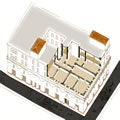
Insula Volusiana
During works of arrangement of the sacred area of S. Omobono in Foro Boario, a stone was found containing an epigraph that provides information on construction of the Insula Volusiana ...
Continue »
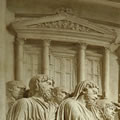
Temple of Jupiter Optimus Maximus
The most important temple in Rome was located on the Capitoline Hill, it was dedicated to Jupiter Optimus Maximus and Juno and Minerva, or the Capitoline Triad; it was built for the vow made by Tarquinius Priscus during the wars against the Sabini ...
Continue »

Horrea Lolliana
In the 1st century B.C. Marcus Lollius Palicanus, belonging to the faction of Pompeo, built on his property, located along the Tiber and near the Horrea Galbana, a new building used as warehouses for the goods that were unloaded in Ripa Marmor. The Horrea Lolliana enjoyed a privileged position on the river and were characterized by two courtyards towards which were the entrances of the warehouses that rented out, while on the outside they presented two rows of tabernae ...
Continue »

Villa of Quintilii
The brothers Sextus Quintilius Condianus and Sextus Quintilius Valerius Maximus, belonging to an important senatorial family, very rich and highly educated, when they had to choose the area where to build their suburban villa, wanted the site at 5th mile of the Appian Way, to represent them and their origins. The Quintilii descended from the Quintii (Coarelli), an important family of Albalonga who became part of the Roman patrician class when their original city was destroyed; They then chose the area of the Fossae Cluilae where the three Curiatii, the hero brothers of Albalonga, had set up their camp for the duel with the Horatii, the champion brothers of Rome ...
Continue »
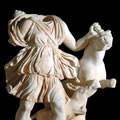
Insula Regio VII Via Lata
In the III century B.C. Rome with 187,000 inhabitants was already the most populated city in the ancient world and would have remained so until 455 AD when it was sacked by the Vandals; at the time of Augustus the inhabitants were one million and reached the maximum expansion during the dynasty of the Antonines in the second century A.D. ...
Continue »
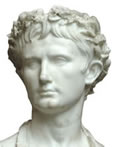
Domus Augusti
Octavian chose to establish his residence as princeps inter pares on the Palatine Hill, not only because he had always lived on the hill and the aristocratic elite had always lived there, but also because there had been Romulus' house and there was the mundus, the well of foundation of Rome. After him many Roman emperors elected the Palatine as their dwelling and added other buildings to the Domus Augusti ...
Continue »

Insula Sertoriana (praedia Auria Cyriacetis)
The insulae were the collective dwellings of ancient Rome and could be identified with the name of their owners, as well as for the Insula Volusiana which took its name from da Lucius Volusius Saurninus; the insula had been built in the Forum Boarium and had one of the sides on one of the vicus where the triumphal processions passed ...
Continue »

Porticus of Consentes Dii
The Porticus Deorum Consentium was a sanctuary whose construction seems to date back to the IV-III century. B.C. and it was a building where a lectisternium took place, a ritual that consisted of a public banquet in which foods were offered to the gods represented by their statues. The rite was of Greek origin and involved six couples of gods who were offered a ritual banquet. The offer to several deities at the same time was not new in Roman religion which already had the triads formed by Jupiter-Juno-Minerva, of Etruscan origin, and Ceres-Liber-Libera derived from archaic agrarian cults to which ritual libations were offered ...
Continue »

Forum Boarium
Between the slopes of the Capitolium and the Aventine hill there was a vast flat area which was the first landing place for those who, going up the Tiber, intended to arrive in Rome; it was a very low area which was often covered by flood waters. The mythical frequentations of the archaic Rumach pass through this place; here Saturn arrived escaped to the captivity of Jupiter, here came Evander and Carmentis, here lived the Titans sons of Vulcan, Caco and Caca, here passed Hercules returning from Iberia and here came Aeneas. It was an area where the river made a loop and it was easy to dock and so did the merchants who went up the Tiber still in the middle Bronze Age (XII century BC); before the foundation of Rome this was one of the places where the Latins and Sabines, inhabitants of the left bank of the Tiber, met the Etruscan people, from the people to the Faliscans who inhabited the right bank of the river ...
Continue »

Domus Gallonii
The Domus Gallonii is a rustic villa discovered along Via Tiburtina, in the 90s of the last century, during the construction of the new agri-food market in Rome and in which a statue of "Hercules child" with a suggestive votive dedication in marble to the demigod was found ...
Continue »
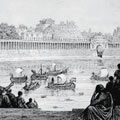
Euripus, canal of Agrippa
From the Pond of Agrippa an artificial channel crossed the Campus Martis channeling the excess waters towards the Tiber. The Euripus, built in the Augustan age and fed by the Aqua Virgo, played an important role in Agrippa's building program in the western Campus Martis, in the use of water as an element of urban characterization, according to a model of typically Hellenistic inspiration ...
Continue »
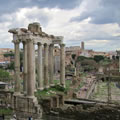
Temple of Saturn
Still today one of the most ancient temples of the Roman Forum, second to ones of Vesta and Jupiter only; it is easily distinguishable among the vestiges of the monuments, its eight columns stand out majestically in memory of Roman people. Its construction seems to have been commissioned by Tarquinius Superbus but the temple was finished a few years later when in Rome began the republican period; the first construction probably covered a pre-existing ara dedicated to the god of the golden age ...
Continue »
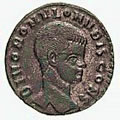
Temple of Divus Romulus
The temple is located where the Via Sacra rises towards the Velia hill, between the Roman Forum square and Arch of Titus; was commissioned by the emperor Maxentius and dedicated to his son who died at a young age at the beginning of the 4th century. When in 309 AD the young Valerius Romolus died, his father Maxentius proclaimed him Divus (Divine) and wanted to dedicate a temple to his cult and had it built round according to the heroon style of the Greek heroes ...
Continue »
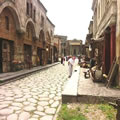
Vicus Jugarius
Vicus Jugarius is the oldest street in Rome, in fact even before the age of kings was the route along passed through the people who were going to the market area at the ford on the river Tiber ...
Continue »
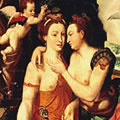
Wood of Anna Perenna at Park of Music
From early Republican era at the first mile of the Via Flaminia was the wood consecrated to Anna Perenna. Outside the Flaminia gate there were large farms and then springs of clear water and valleys and woods; these woods were not very frequented habitually and often there were going on mysterious rituals also . Here was the wood of Anna Perenna, the goddess of nature and the renewal of the seasons ...
Continue »
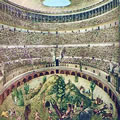
Ludus Matutinus
When the Colosseum was inaugurated in A.D. 80, the emperor Titus celebrating 100 days of games that the historian Dio Cassius called really great because the marvel was not only the many gladiator fights, but the great representations of naval battles and hunts ...
Continue »
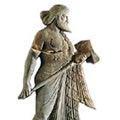
Volcanal
The first buildings In the Forum valley were the temples dedicated to the archaic deities; the oldest temple is the Volcanal, an altar erected in honor of the God Volcan nearby Comitum ...
Continue »

Castra Peregrina
The organization of the Empire by Augustus also entailed the creation of organizations entrusted with tasks until that time attributed confused and among these was the establishment of a military detachment that today would be called "intelligence" ...
Continue »
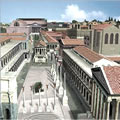
Via Sacra, luxury street
Already starting from Tarquinius Priscus times along the Via Sacra were built porticus on which opened tabernae where were selling the most varied goods; in the V century BC in the Forum were opened tabernae for the sale of meat coming in from nearby Foro Boario: it was from the counter of a butcher that the father of Virginia took the knife by which killed her near Sacellum Cloacinae. At the end of the IV century BC There it was a big change: Gaius Menius, who defeated the Samnites washing the shame of Caudine Forks, he decided to make improvements to the Forum and built some elevations on tabernae surrounding the large central area of the Forum where took place then the Ludus Gladiatores so there were more places for spectators ...
Continue »

Pandataria, insula et carcer
Ventotene is one of the Pontine islands, in the days of Ancient Rome his name was Pandataria. Very small, only 154 hectares, was chosen by the emperors of Rome as a place of exile for their family women considered immoral or dangerous ...
Continue »
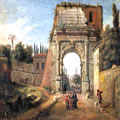
Arch of Titus
The Arch of Titus is one of two arches of the Roman Forum still intact. The other is the Arch of Septimius Severus that with the Arch of Constantine near the Colosseum and the Arch of Gallienus in Esquiline are the triumphal arches still visible and substantially intact in Rome ...
Continue »
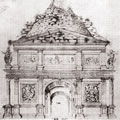
Arcus of Malborghetto
In the IV century A.D., at the intersection of the Via Flaminia with the road, which no longer exists, that linked Capena with Vejo was erected almost certainly an arch to celebrate Constantine's victory in the battle of the Milvian Bridge in 313 A.D. The battle began at Prima Porta, and ended with the defeat of Maxentius at the Milvian Bridge; The arch was built in the same place where, according to legend, was the camp of Constantine who here had a vision of the cross ...
Continue »
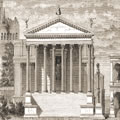
Temple of Jupiter Stator in Palatio
The legend tells that the temple was built by Romulus near the Porta Mugonia, at the point where he vowed honoring Jupiter with an aedes if he had "stopped" the retreat of the Romans who were retreating inside the walls pressed by the Sabines ...
Continue »
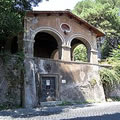
Temple of the Storm
Aedes Tempestatis, was a temple built to fulfill a vow of Lucius Cornelius Scipio, son of Barbatus, who during his consulate in 259 BC conquered Corsica and the city of Alearia ...
Continue »
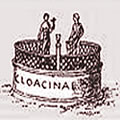
Sacellum Cloacinae
Legend has it that the Romans and the Sabines, after the battle of Lacus Curtius decided to unite the two peoples, and laid down their ...
Continue »
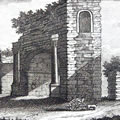
Arch of Drusus
Historical sources tell us that the Senate had erected along the Via Appia a arch in honor of Drusus in 9 BC, was a post-mortem recognition by the triumphs ...
Continue »
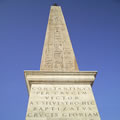
The Obelisk of Lateran
The Lateran Obelisk is one of thirteen ancient obelisks of Rome, with its 32.18 m height (with stand and the cross reaches 45,70 m) it is the world's ...
Continue »
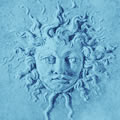
Neo-Pythagorean Basilica of Porta Maggiore
In 1917 occurred some landslides along the railway line coming out from Termini towards Cassino, near Porta Maggiore opened a chasm in which collapsed a ...
Continue »
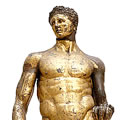
Temple of Hercules Olivarius
The temple is the oldest still existing marble building in Rome and dates back to 120 B.C.; is located in the ancient Forum Boarium area where there was ...
Continue »
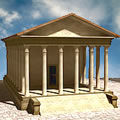
Templum Lares Permarini
In southern Campus Martius, where greater was the influx of people for the presence of the Porticus Minucia Vetus where it was the distribution of ...
Continue »
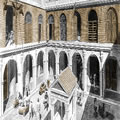
Horrea Agrippiana
Vicus Tuscus, where had settled people from Tuscia mainly of Etruscan origin, it was the road that led from the Forum Boarium with the Roman Forum ...
Continue »

Theatre of Marcellus
Theatre of Marcellus is perhaps the most ancient theater of which even today's architecture is visible; its construction was begun by Caesar, but ...
Continue »
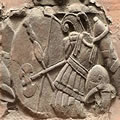
Militia Vigilum: the firefighters corp of ancient Rome
Was the Emperor Augusto in 22 B.C. to introduce a true corp of firefighters. Initially it was formed by five hundred slaves put to the orders of an Aedile ...
Continue »
MEDIEVAL ROME
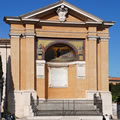
Triclinium Leoninum
At the end of the sixteenth century, when the Pope already lived in the Palaces on Vatican Hill, Pope Sixtus V wanted to demolish the previous residence, the Patriarchus Lateran, but he recommended to preserve the apse of the Triclinium for the important meaning that the wall mosaics had for the Roman Church ...
Continue »

Santa Maria in Tempulo
On the slopes of the Celio where in the imperial age the Area Apollinis was located, in the 6th century some Greek monks built an oratory dedicated to S. Agatha; it was a diaconia for the reception of pilgrims coming from the South and the East and it was until the end of the 12th century ...
Continue »
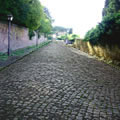
The Hillock of Stronghold Savella
There are some magic places in Rome where it seems that the time has been stopped, between these the Hillock of Stronghold Savella ...
Continue »
RENAISSANCE ROME
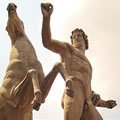
Montecavallo divine twins
The large square in front of the Quirinal palace commissioned by Sixtus V seems designed by a rationalist architect who wanted to enrich it with two imposing statues of horses and riders with purest lines ...
Continue »
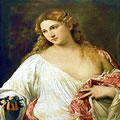
'Square Fiammetta', the courtesan house
Behind “Via dei Coronari”, where were the sellers of rosaries and holy images and that was the street the pilgrims have to walk for going to St. Peter ...
Continue »
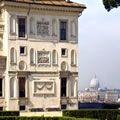
Villa Medici
Along the avenue from Place Trinita dei Monti leads to the Pincio is the entrance of one of the most beautiful Renaissance villas of Rome: Villa Medici ...
Continue »
BAROQUE ROME
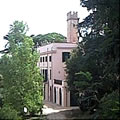
Villa Sciarra, Villa of the white peacocks
Along the slopes of the Janiculum at the time of ancient Rome there were lucus and hortus and the area at the end of the 1st century B.C. was part of the Horti of Caesar; here was the suburban villa where Cleopatra spent her Roman stay. Probably, the first temple dedicated to oriental divinities was built for her and above that was erected, in the fourth century AD, the one of which testimonies were found about a century ago during some works ...
Continue »
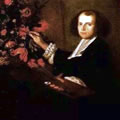
Via Mario de’ Fiori
There is a narrow road that, parallel to "Via del Corso", takes us back to Rome in the eighteenth century and the atmosphere that reigns in it refers to aesthetic pleasures from which the name of the character to whom it is entitled is not exempt: "Marius , Pictor Romanus, vulgo Mario de 'Fiori ", or Mario de' Fiori, the eighteenth century painter who loved to paint flowers ...
Continue »
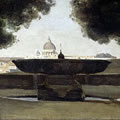
Cannonball Fountain
On the Pincio hill, right in front of Villa Medici, there is a fountain that despite its structure is essential and not showy embodies art, history and legends perhaps like few others in Rome and would be almost unknown if it weren't linked to an anecdote about Christina, the Queen of Sweden who in the seventeenth century was one of the most eccentric and in sight personalities in Rome ...
Continue »
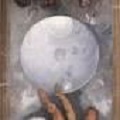
Alchemical frescoes by Caravaggio at Casino Ludovisi
When in 1599 the Cardinal Del Monte became owner of the vineyard near Porta Pinciana decided to put in a park and restored the villa so that it could host musical entertainment that he loved very much; but the Cardinal had another passion: dabbled in chemistry, medicine, pharmacy, or as it said then magia naturalis ...
Continue »
ROMANTIC ROME
MODERN ROME
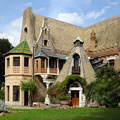
Villa Torlonia
Where the ancient Romans had built their suburban villas, the great and powerful families of the Roman nobility in nineteenth century built their hunting lodges, having their parks and gardens designed by the greatest architects of their time; today the municipality of Rome has become the owner of this admirable artistic heritage but also of a great green heritage that makes Rome one of the greenest cities in the world ...
Continue »

Via Veneto
When Villa Ludovisi was sold and subdivided, the streets of the new Ludovisi district coincided largely with the avenues that the great architect of gardens, Le Notre had designed in 1621; the avenue that went down from Porta Pinciana until the Palace where Queen Margherita lived, was going to become one of the most famous metropolitan streets in the world: Via Veneto ...
Continue »
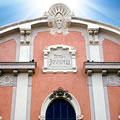
Ambra Jovinelli Theatre
On 3 March 1909 the Jovinelli Theater was inaugurated that wanted to be the alternative to the committed theater and, after various vicissitudes, it is still today the temple of comedy in Rome. The theater is located in the Esquilino district in the same area where at the time of Ancient Rome the Horti Liciniani founded ...
Continue »
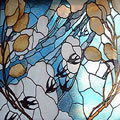
Liberty stained glass window in Rome
When the Art Nouveau arrived in Italy the new style that expressed was called Liberty and the world it represented was the beauty in its most fantastic shapes, a vision in which dominated the revised forms of nature as to be called even Floral Style. The new trend mainly influenced the architecture and not only in his definition of space as in the decorative elements, so that wherever in search of continuity between inside and outside was imposed a profound reinterpretation of the glazing ...
Continue »
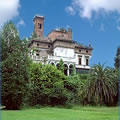
Villa Mirafiori
The name was given to the villa by his famous host, the "almost" queen of Italy Rosa Cervellana. Built in 1874 to be the Roman residence of the Countess ...
Continue »






